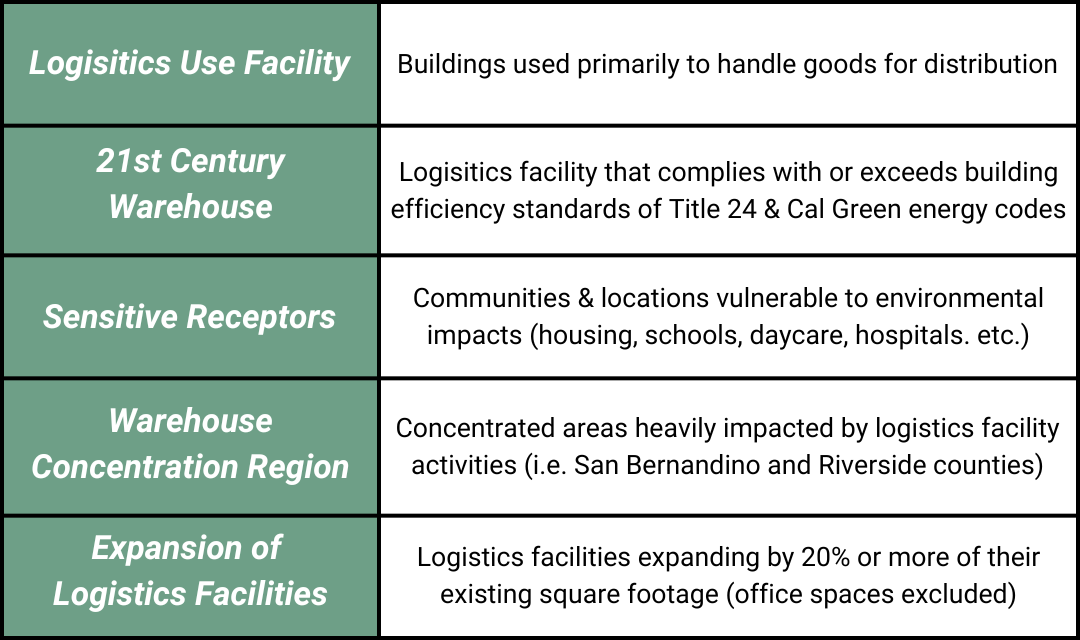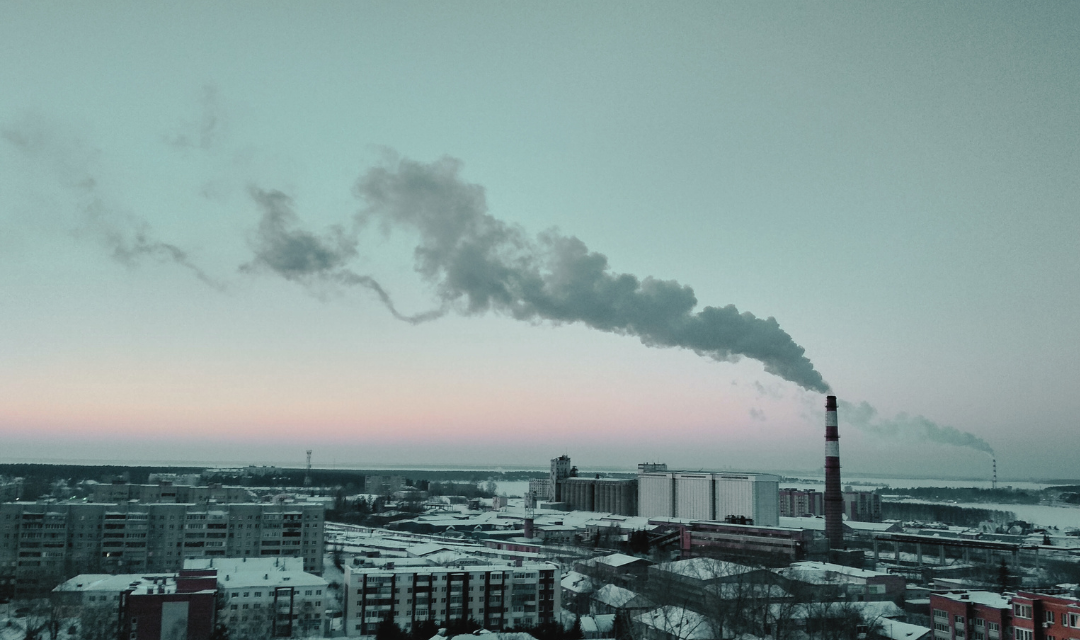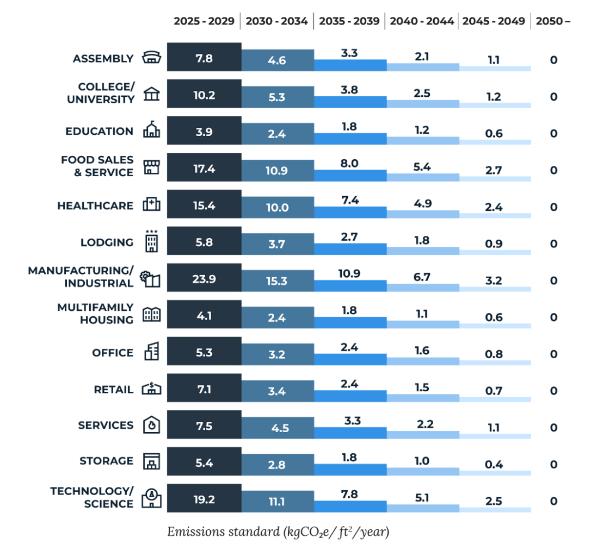If you work in commercial real estate, property management, or are just fascinated by local government, the odds are you are aware of building performance reporting and improvement standards. Commonly referred to as BPS, short for building performance standards, many cities have been introducing regulations around the efficiency of large commercial properties.
If you aren’t fully aware of how these ordinances work, here are a few articles to help get the ball rolling: 4 Benefits of Benchmarking, Building Performance Standards in California, Ordinance Information. Larger cities, such as Los Angeles, New York City, and Boston were early adopters, which helped shape policy for smaller cities like the five we outline below.
Santa Monica, CA, Clean and Healthy Buildings Ordinance (CHEBO)
One of the newer cities to join the list, Santa Monica has recently initiated their Clean and Healthy Buildings Ordinance (Santa Monica CHEBO). While their BPS policy has yet to be released, their benchmarking is being finalized as of May 2025.
Property Size
Buildings over 20,000 sq ft.
Benchmarking Deadline
June 1, 2026 – annually thereafter.
Building Performance Standards
The City of Santa Monica has yet to finalize their Clean and Healthy Building Ordinance (CHEBO) with its BPS element. However, their BPS program is set to be finalized in 2025 and will go into effect June 1, 2026.
In the proposed policy, covered buildings need to meet greenhouse gas and/or energy use targets every 5 years beginning in 2031 for buildings larger than 50,000 square feet and in 2036 for buildings larger than 20,000 square feet. The final performance target is aimed at net zero emissions by 2050.
Penalties
Penalties for non-compliance in Santa Monica are pending finalization.
West Hollywood, CA, Equitable Buildings Performance Standards (EBPS)
While we’re discussing SoCal policy, West Hollywood also joined the BPS club with their Equitable Building Performance Standards (WeHo EBPS). With benchmarking starting in 2026, they also have set their building improvement deadlines.
Property Size
Buildings over 20,000 sq ft.
Benchmarking Deadline
May 15, 2026 – annually thereafter.
Building Performance Standards
West Hollywood drafted their Equitable Building Performance Standards policy which will require owners of all existing buildings over 20,000 square feet to make improvements to their building to meet performance targets. These will become more stringent over time.
First interim deadline – May 15, 2028
Second interim deadline – May 15, 2032
Final deadline – May 15, 2036
Penalties
Failure to comply with benchmarking deadlines may result in a fine up to $1,000.
Evanston, IL, Healthy Buildings Ordinance (HBO)
Evanston adopted Building Performance Standards (BPS) to cut emissions from buildings through their Healthy Buildings Ordinance (HBO). Beginning with their benchmarking regulations to help property owners identify their baseline to improve upon.
Property Size
Building Type 1: Any building over 100,000 sq ft.
Building Type 2: Any building between 50,000 and 100,000 sq ft.
Building Type 3: Any building between 25,000 and 50,000 sq ft.
Benchmarking Deadline
June 30, annually.
Building Performance Standards
Covered properties in Evanston need to meet interim performance targets beginning in 2031. Every 5 years, performance standards increase, leading to net zero by 2050.
Penalties
Failure to comply with benchmarking reporting requirements can result in a $100 fine monthly until it is resolved. BPS non-compliance penalty amounts will be up to the discretion of the City Manager.
Newton, MA, Building Emissions Reduction Disclosure Ordinance (BERDO)
Newton initiated their BPS to cut emissions from buildings through their Building Emissions Reduction Disclosure Ordinance (BERDO). The program is set up similarly to Evanston, starting with benchmarking and interim performance targets.
Property Size
Buildings over 20,000 sq ft.
Benchmarking Deadline
September 15, 2025 – Non-residential buildings over 100,000 sq ft.
September 15, 2026 – All buildings over 20,000 sq ft.
Building Performance Standards
Similar to Evanston, covered buildings in Newton must comply with BPS requirements in 5-year cycles, ultimately leading to becoming net zero emissions by 2050.
Penalties
For each day in which a building has failed to comply, it will be considered an individual violation with a penalty of $1,000 per day for buildings over 35,000 sq ft. or $300 per day for buildings between 20,000 and 35,000 sq ft.
Providence, RI, Building Energy Reporting Ordinance (BERO)
Last but not least, Providence joined the club with their Building Energy Reporting Ordinance (BERO). Although they have yet to set building performance standards, they have initiated incoming benchmarking requirements for existing buildings.
Property Size
Buildings over 20,000 sq ft.
Benchmarking Deadline
Buildings over 50,000 sq ft: May 15, 2025 – annually thereafter.
Buildings over 20,000 sq ft: May 15, 2026 – annually thereafter.
Building Performance Standards
Building performance standards in Providence have not yet been finalized.
Penalties
First non-compliance violations will be a warning. Second violations result in fines of $40 per day, not exceeding $4000 per year (buildings over 50,000 sq ft.) or $30 per day, not exceeding $3,000 per year (buildings between 20,000 and 50,000 sq ft.).
Benefits to Building Performance
You may be wondering – what’s the point of all of this? Of course, there is the environmental impact of these buildings being inefficient. However, there is also the business side of these ordinances. Properties that are efficient save money on operating costs and increase property value.
Ultimately, cities are beginning to recognize that their building standards are not what they used to be. Pushing these ordinances means that cities are working towards modernizing and improving their infrastructure.
While we couldn’t cover every detail on these ordinances, we encourage you to reach out if you want expert guidance and compliance services. Green Econome, a woman-owned, full-service energy and water efficiency construction and consulting company, has over 20 years of combined experience. Feel free to reach out to Green Econome’s founder and CEO, Marika Erdely, at marikae@greeneconome.com.




















